Let me go back to the quest of new evidence of existence of the four human Aspects, the knowledge of which were lost by humanity many centuries ago. You might ask why I am doing this, given that the subject has been addressed on this website numerous times before. Firstly, the quest provokes a genuine interest in me. Secondly, it is so striking how everything is uniform, irrespective of cultures and continents. Well, thirdly, I do this to ensure that once a bright day will come when only a minor handful of uneducated fools will continue brushing obvious facts aside, while the reasonable majority will follow the wise recommendation of the ancients: “Know yourself!”, and the entire mankind will eventually be transfigured.
It seems to me in one of recent messages daily received by our website there was a link to information on the subject. I sincerely thank the person who gave us this hint, and perhaps I will start with the ancient mystery of the Trinity Monastery – the Orthodox male cloister in Tyumen, Russia, which was one of the first stone buildings in Siberia. Here are a couple of photographs:
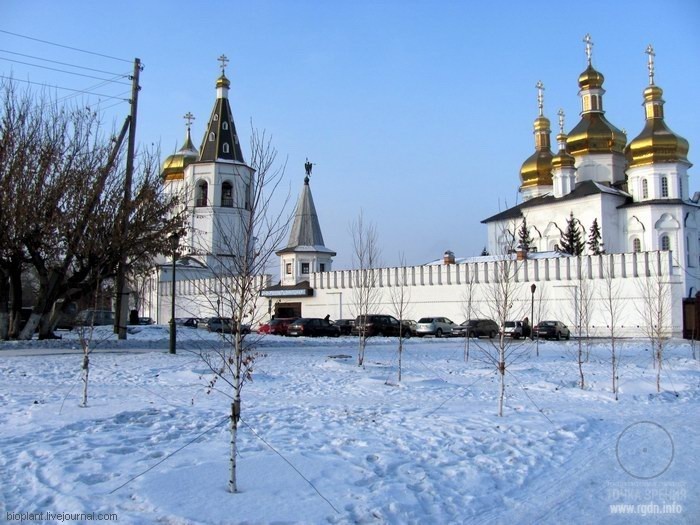
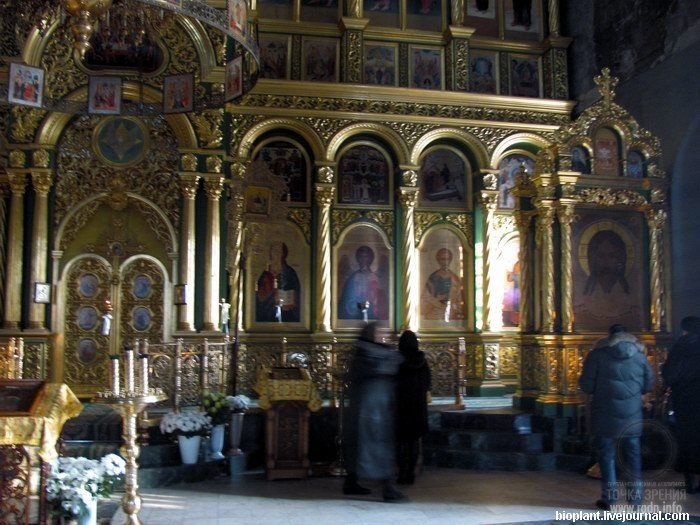
Inside the main monastery cathedral there is an ordinary iconostasis today, however in old times in this honoured place there used to be an unusual three-faced icon:
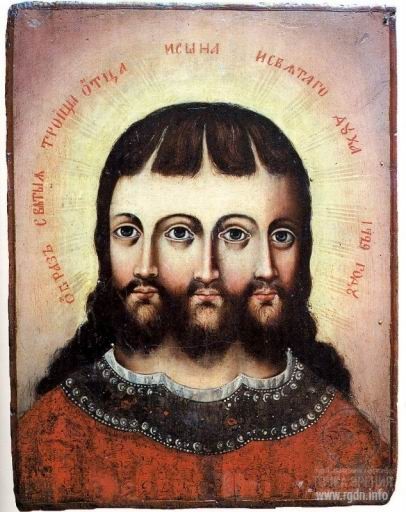
Very characteristic are directives of Tobolsk Consistory, dated 1748 and 1770, addressed to Tyumen monastery and reflecting the decline of icon painting in the 18th century. Both directives state the necessity to correct the improper icon painting style and to eliminate the many-faced image of the Holy Trinity that used to be portrayed with three faces and four eyes. Therefore, according to the Holy Synod decree of 11 June 1764, it is ordered that “strange and incongruous obscenities on icons (like that on the icon presented to His Majesty in 1764 by a merchant during the Volga march and depicting the Holy Trinity with 3 faces and 4 eyes, like Hellenic deities) must be certainly eliminated”. Moreover, “the image exhibited above the Royal Gate of the Trinity Cathedral must be immediately removed, and if such removal threatens to damage the iconostasis the image must be covered with another painting on the farther superior’s decision”. (V.G. Molodykh. Materials on the History of Icon Painting and Art in Western Siberia // Records of Tyumen Society on Scientific Research of the Local Area. Tyumen: State Printing House, 1924. p. 151-165.)
The above text indicates that in earlier centuries such tree-faced icons were widespread and common in Rus and were even presented to Russian tsars, whereas contemporary Orthodox Christians get shocked by such images. Despite the later suppressions and prohibitions, for several decades such image occupied a special place above the Royal Gate in the main cathedral of Tyumen.
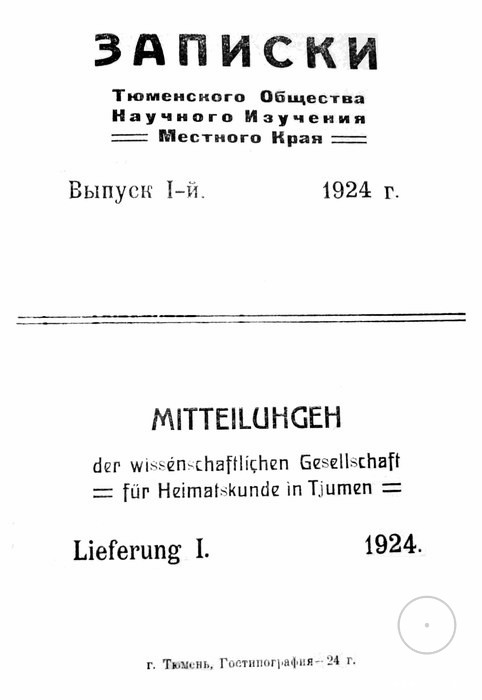

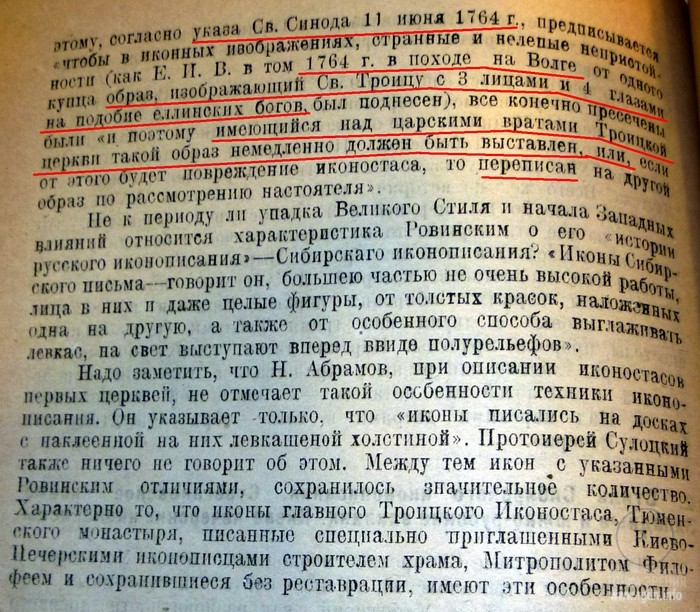
It turns out such unusual three-faced images were typical for Western Europe of the 13-16th centuries as icon depictions of the Holy Trinity. In 1628, Pope Urban VIII declared such images “heretical and sacrilegious”, although they were already popular and “settled” in Russia. I won’t repeat inventions of religious historians and their explanations of the Orthodox dogmata relating to the Father, Son and Holy Spirit (or the Holy Trinity) formula, but will just state such images were called “mixed-hypostasis”, were forbidden in the 16th century by the Council of Trent and later on started to be obliterated everywhere. I should say it is quite strange, at least to me. If it was the Holy Trinity image, why did they begin to obliterate such images?
A little more history:
The iconographic motif of the three-faced Trinity usually presupposes depiction of Christ with a combination of his full face and his two faces three-quarter turned to the right and to the left. First images of this type were recorded on the wall of the Church of St. Clement of Ohrid (1295) and in frescoes of the Church of the Nativity of Virgin Mary in Montenegro (circa 1360). In Western Europe this icon image was known and used in the 15-18th centuries, despite repeated bans.
Is it really just the lack of artistic aestheticism of such images of the Holy Trinity, called the incongruous obscenity, which can explain the desire of supreme Christian priesthood to eradicate the “three-faced strangeness” from religious tradition? Or, maybe, mixed-hypostasis images point at something totally different and represent miraculously extant echoes of the knowledge of the four human Aspects, which knowledge the ancients endeavoured to communicate via medieval icons, like the AllatRa sign via the icon images of Our Lady and more ancient images of goddess Isis? They endeavoured, and such transfer of knowledge succeeded for a certain while, however in nearly every article on our website we automatically refer to one and the same theomachy force that skilfully and thoroughly “erases” from humanity’s view the spiritual knowledge across the planet Earth. I cannot assert this for sure, but why wouldn’t I assume?
Yet, let’s look at the icons again:
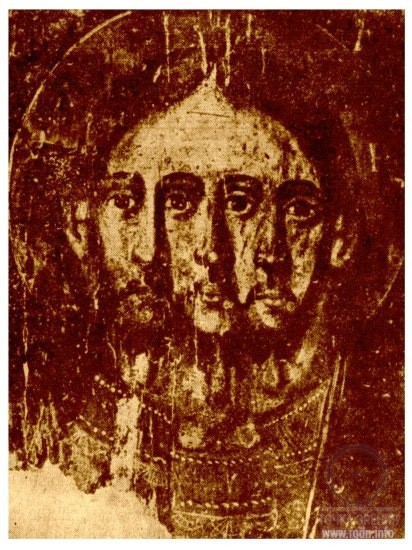
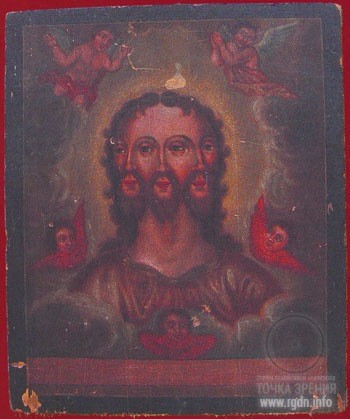


The Trinity icon (mixed-hypostasis), 1729, by an unknown artist from Tobolsk (Western Siberia). Before 1926 it was kept in Novo-Tikhvin Nunnery near Tobolsk, and now it is kept in the Sverdlovsk Regional History Museum. 31×24×2 cm plate, tempera, oils, the framework is lost. (The Siberian Icon collection, Omsk, 1999) Even more enigmatic is the Trinity image (mixed-hypostasis) from the Sverdlovsk Regional History Museum collection. The icon is dated 1729. It was presumably painted by an artist from Tobolsk. Iconography of this image, representing the indissolubly united three heads, originates from the Gallic-Roman deity triad. In the baroque age, the distinction between an icon image and an ordinary human face faded even more. Original medieval icon images gradually turned into individualized faces, evidencing serious changes in the system of values and priorities, for such transformation has always been due to the issue of correlation of the sacral and the mundane in culture. The share of the mundane in baroque culture substantially increased because of a new attitude to human personality. Personality was already understood not ontologically with God’s image being the basis of human nature, but rather psychologically, as spiritual individuality.
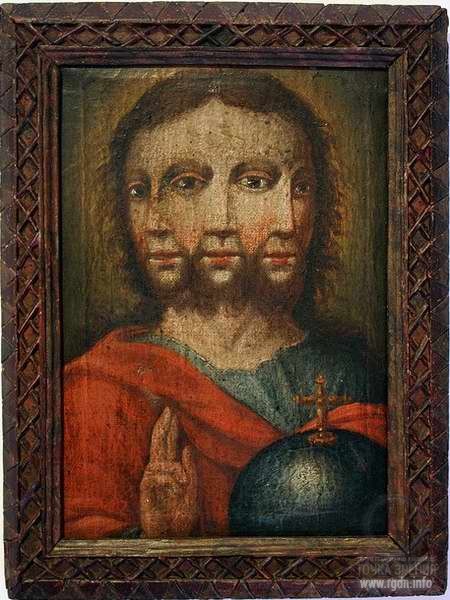
An unknown German artist of the early 17th century. Canvas, oils, 35.5×26 cm. Tyrolean Folk Art Museum. Innsbruck, Austria
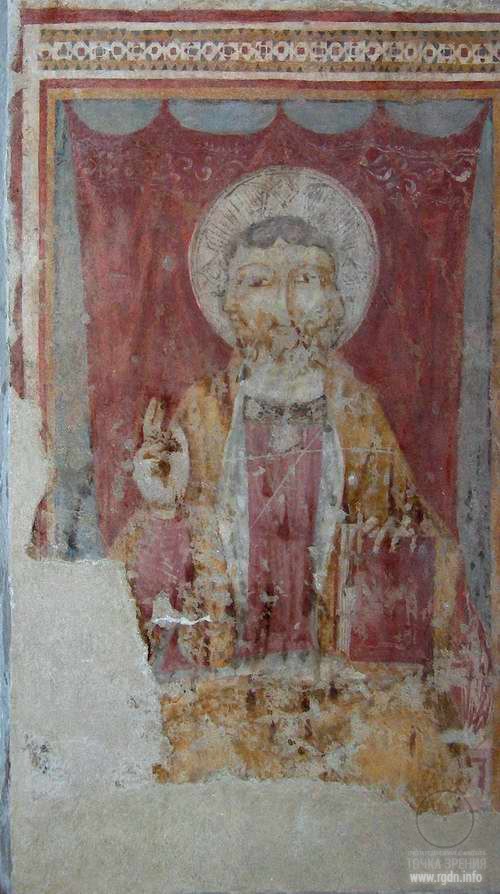
There is unconfirmed information that this fresco is found in St. Anastasia Church in Perugia (Um-bria, Italy).
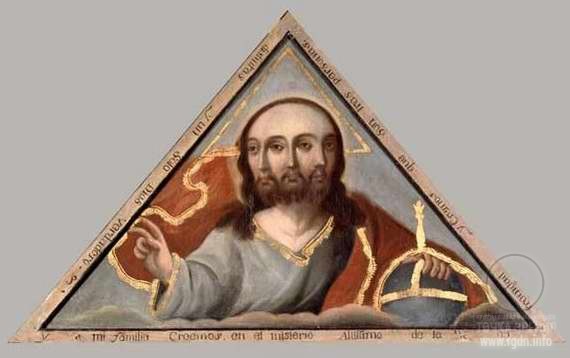
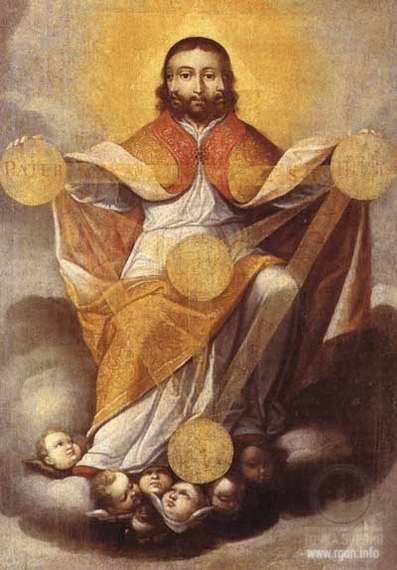

In today’s Romania.
A three-faced deity bas-relief on the internal colonnade of the patio in Basilica Papale di San Paolo fuori le Mura, Rome (1220-1230).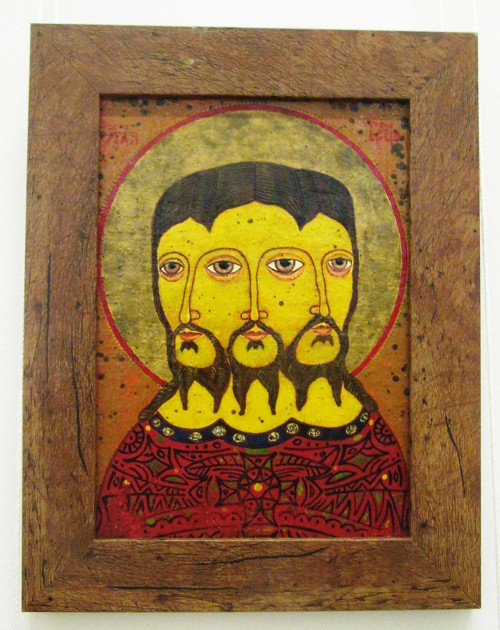

E. Roiseman’s collection.
Sergey Kuzmin, Director of the Anti-Religious Museum, 1941, Leningrad, St. Isaac’s Cathedral
A reasonable question may arise: why do I think the mixed-hypostasis images are indications of the four human Aspects, if such images are three-faced? There is only one explanation: such images are depicted on the flat, whereas four faces depicted on the flat would be too shocking even for a religious fanatic. Perhaps, it is all due to flatness, while a relevant 3D image would look, for instance, like the four-faced “Buddha” discovered by fishermen in Transbaikalia, on the Onon River.

Well, let’s look at three-faced and four-faced “divine” images from various cultures, religions and parts of the world, which amazingly resemble each other, and think again: what can be behind the human many-faced mask?
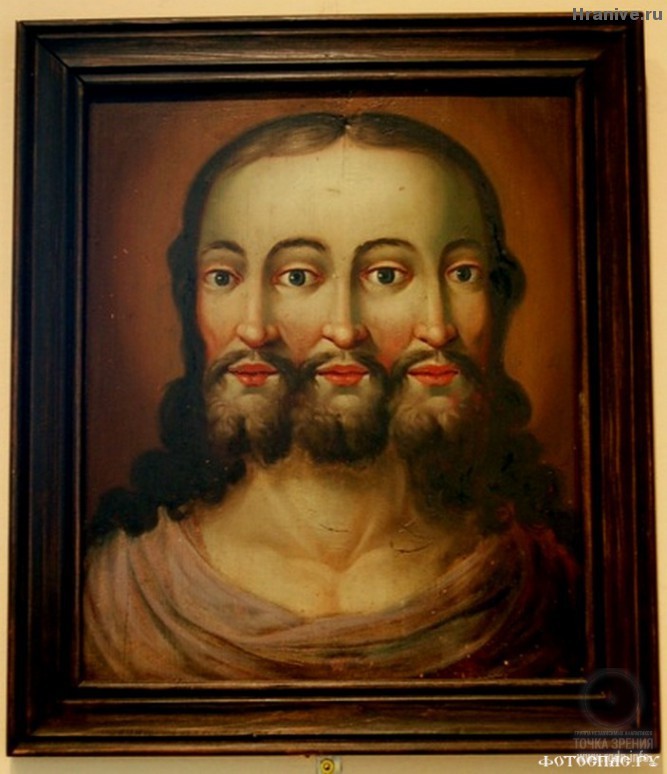
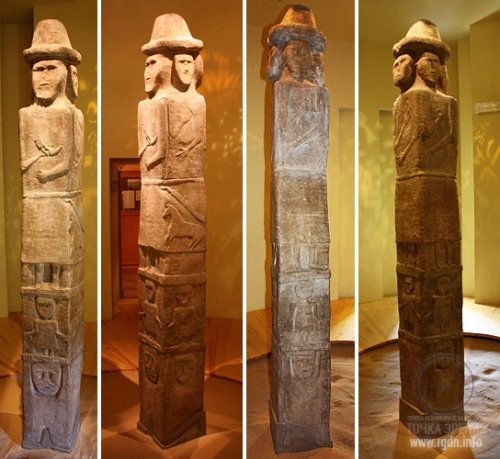
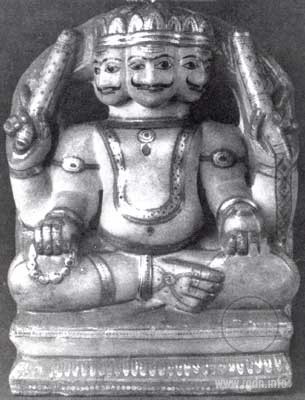
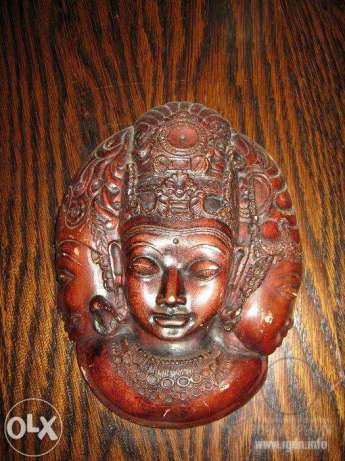

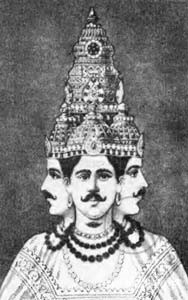
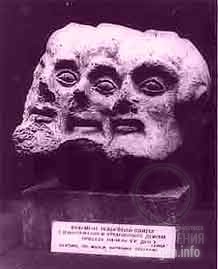
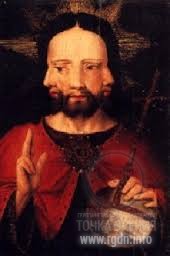
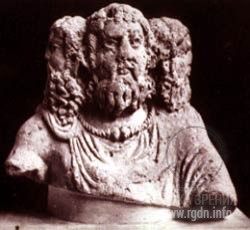
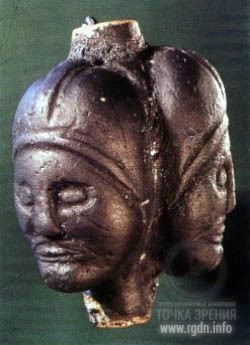
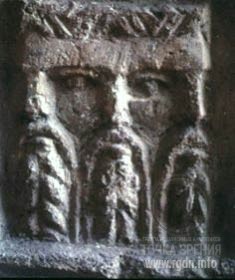
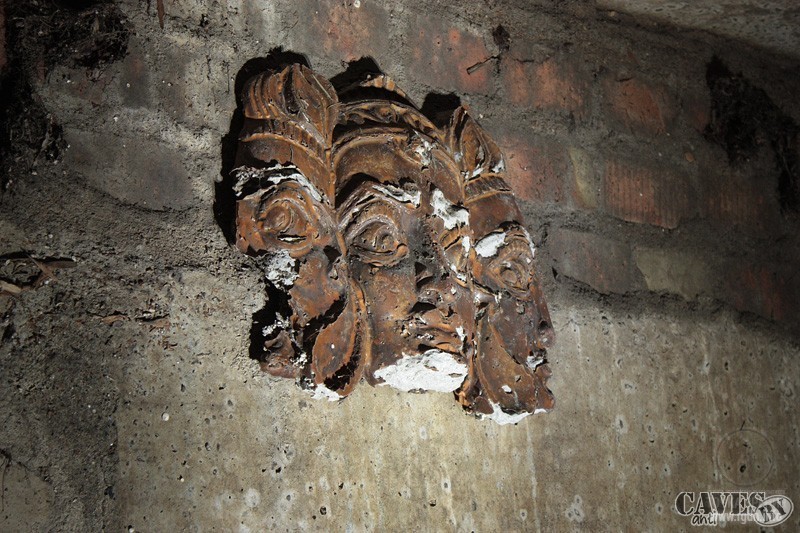
Minsk underground explorers have found an unusual bas-relief executed in Hindu style in a rainwater collector.
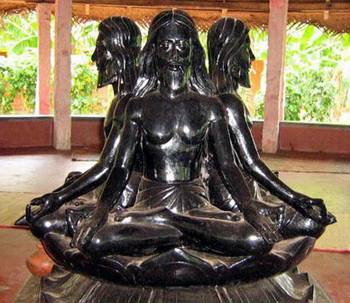
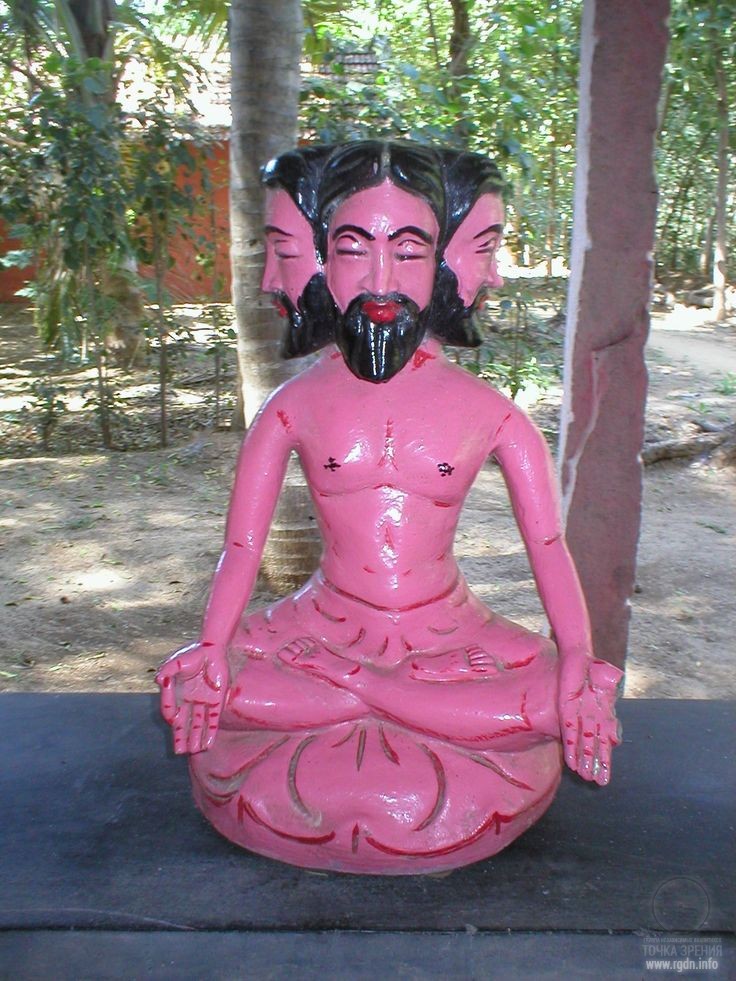
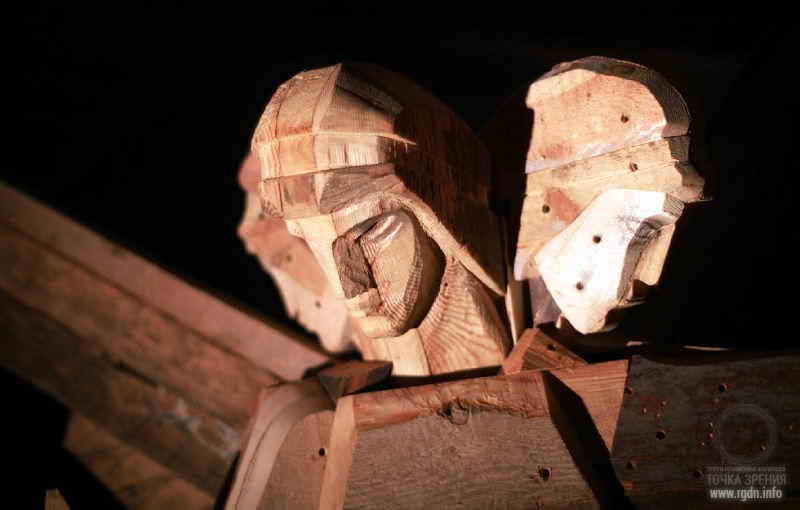
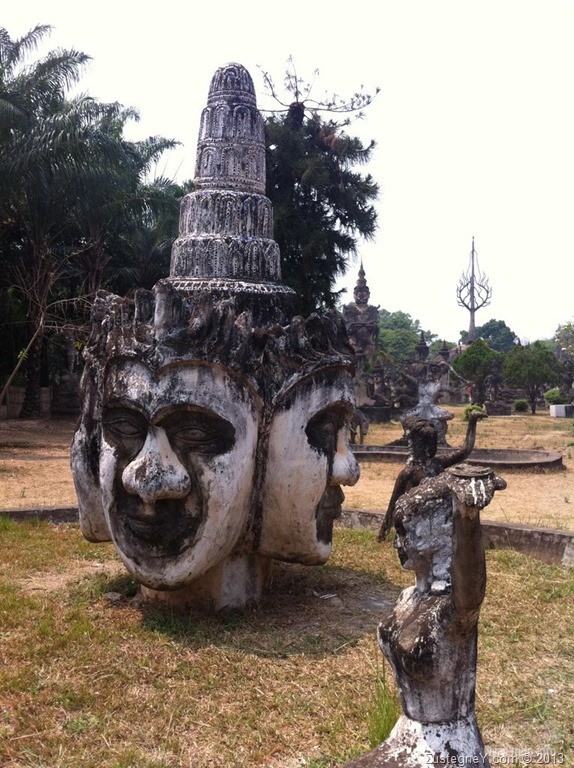
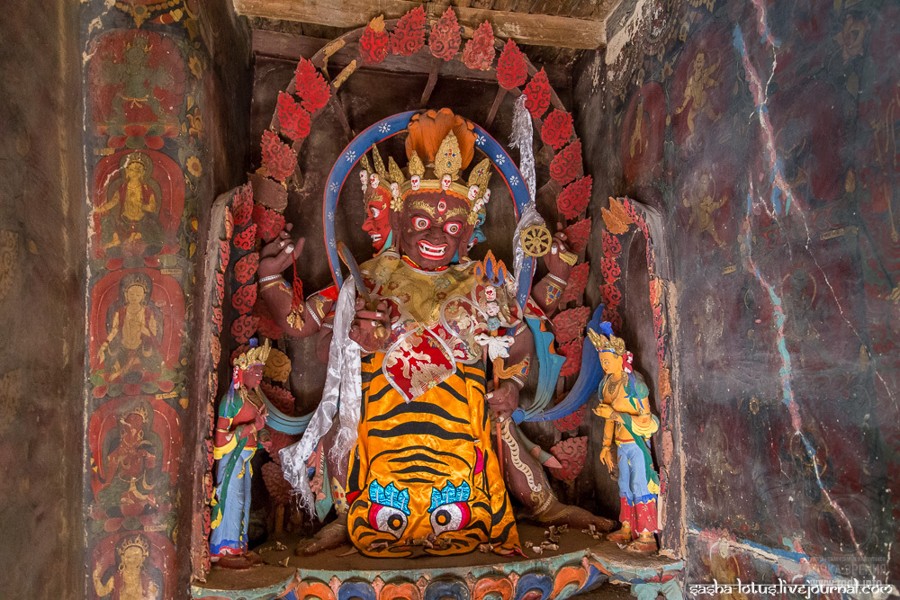
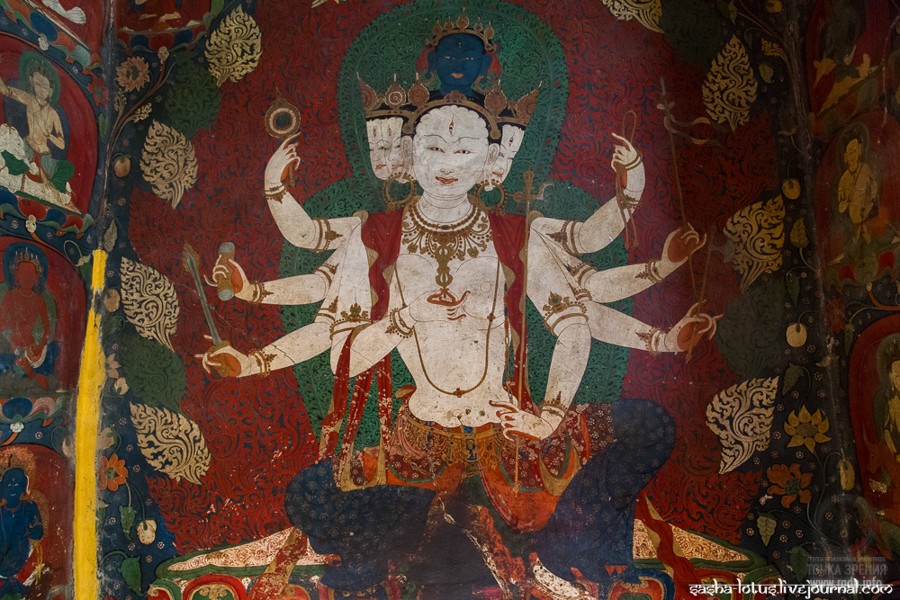
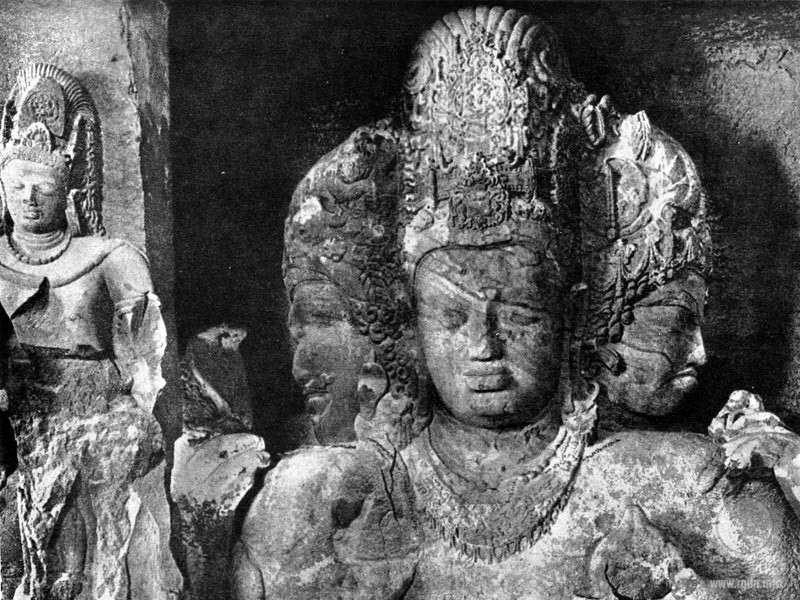
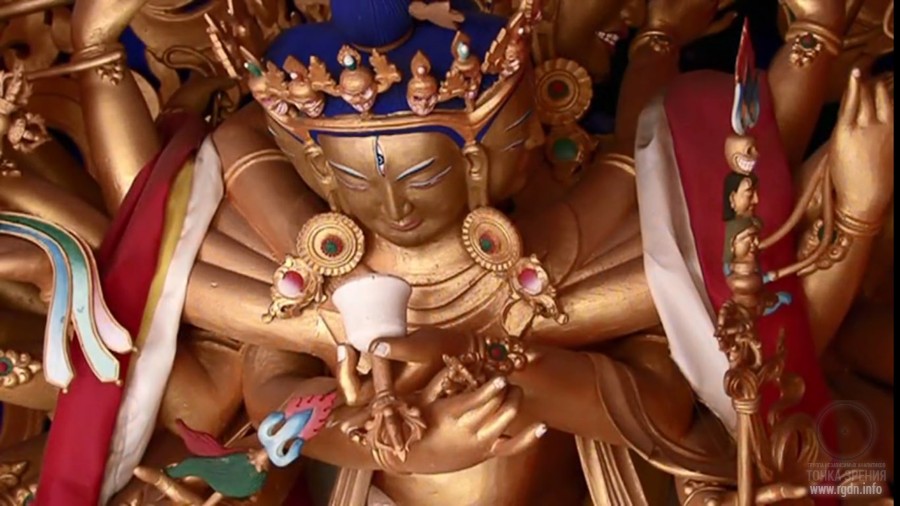
These can be nothing but depictions of the much talked-about four human Aspects, the description and characteristics of which are already presented on our website along with the largest online collection of relevant artefact images. Well, finally let me add for those who don’t know yet: detailed information on the Aspects is available in the AllatRa book.
I don’t mind listening to objections. Please, write in the commentary section.
Prepared by Dato Gomarteli (Ukraine-Georgia)
 Three-faced and four-faced images... New evidence of existence of the four Aspects?
votes:
156
Three-faced and four-faced images... New evidence of existence of the four Aspects?
votes:
156
|


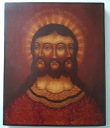
Another image for your collection: anonymous russian painter, XX century, egg tempera on wood board; nowadays in private collection in Poland

Project Aim










Jedrzej 17.04.2019 17:52 Reply ↵